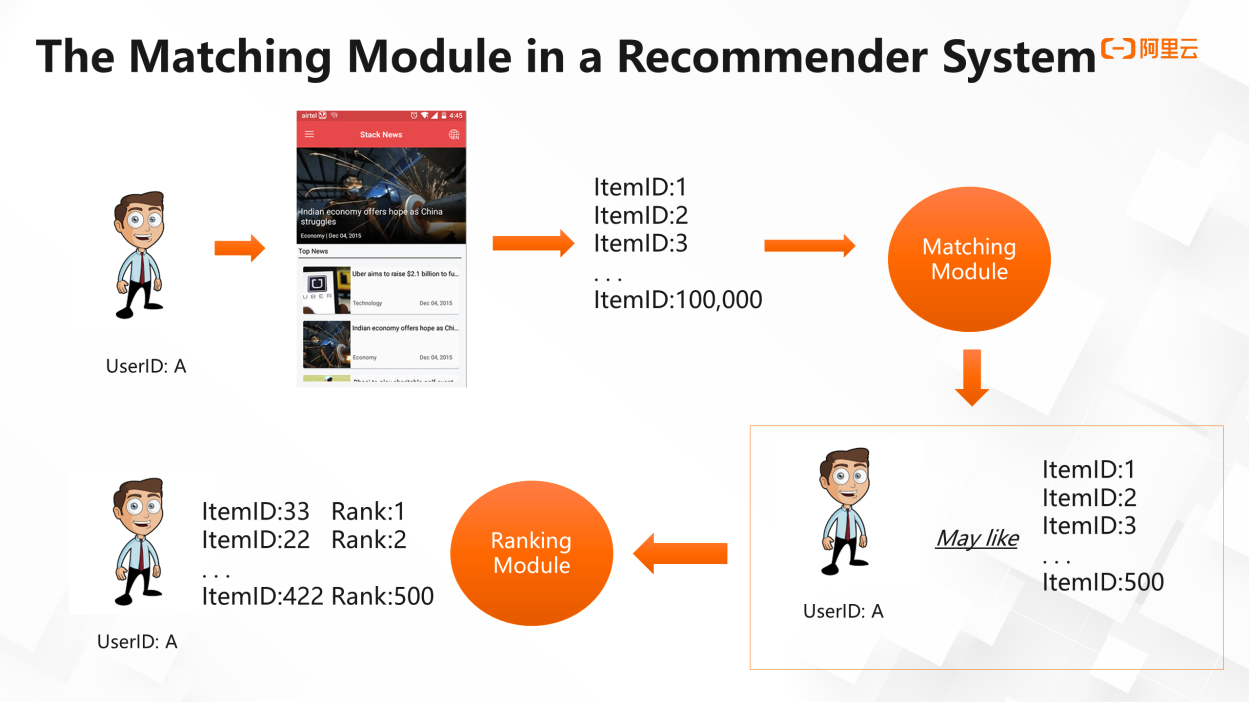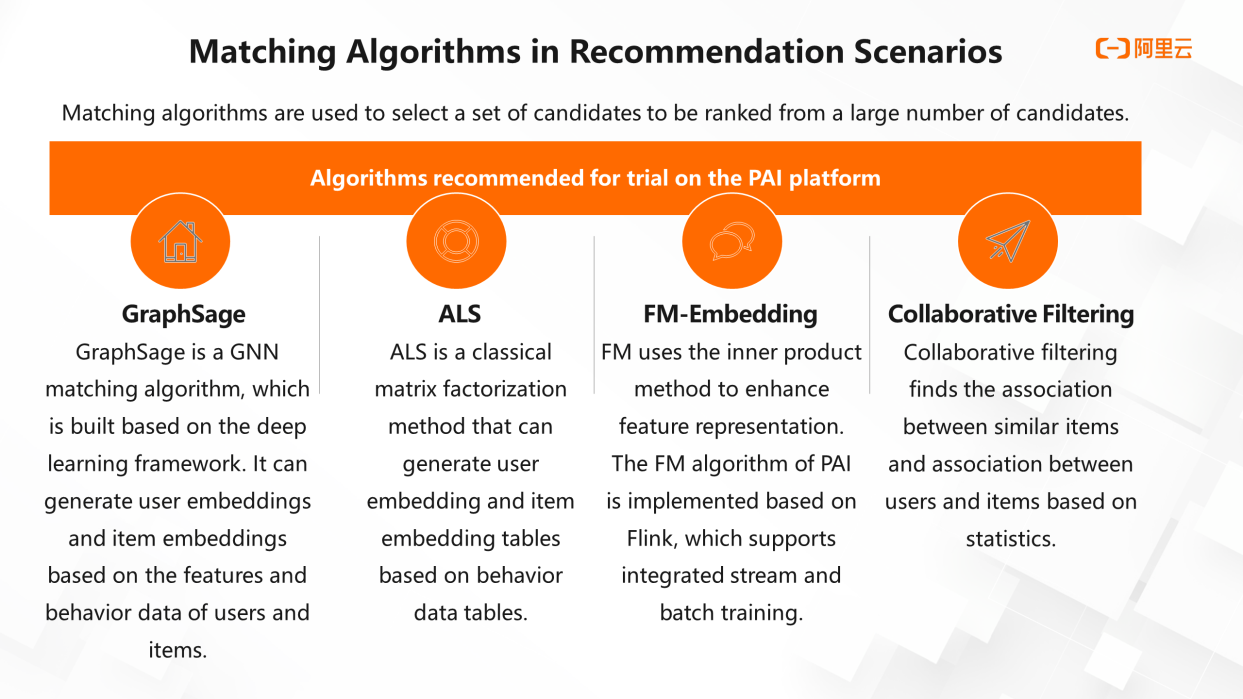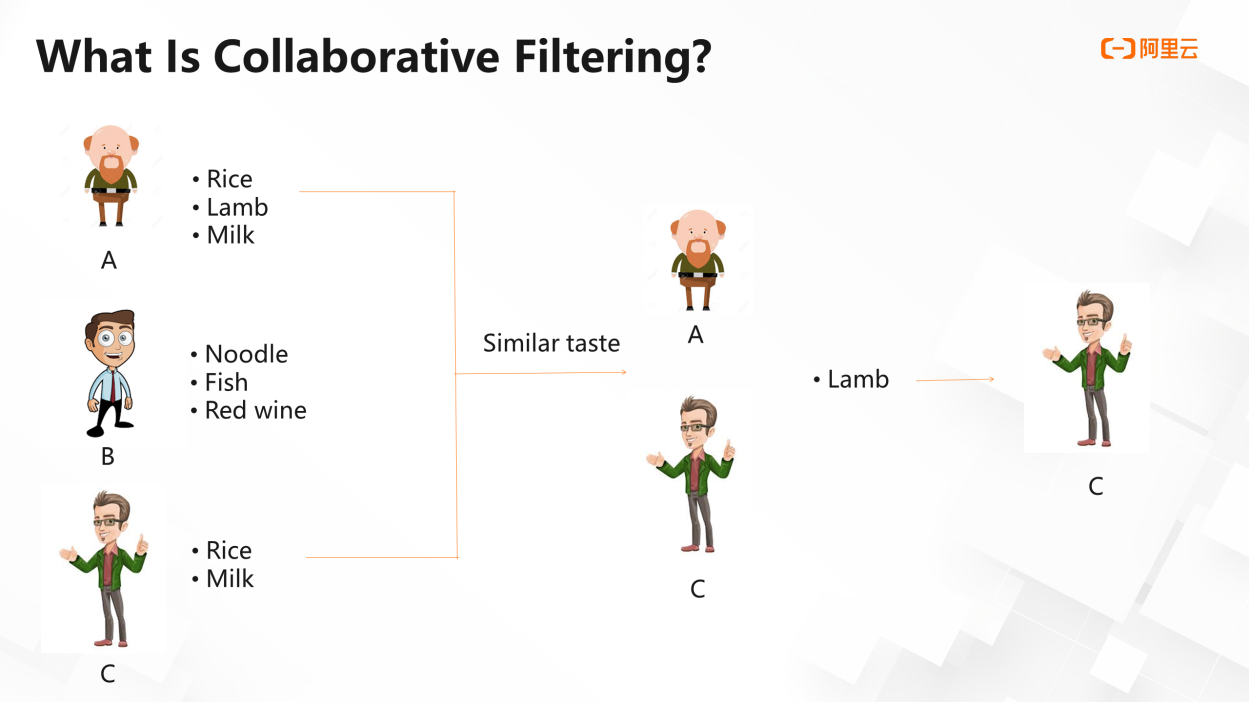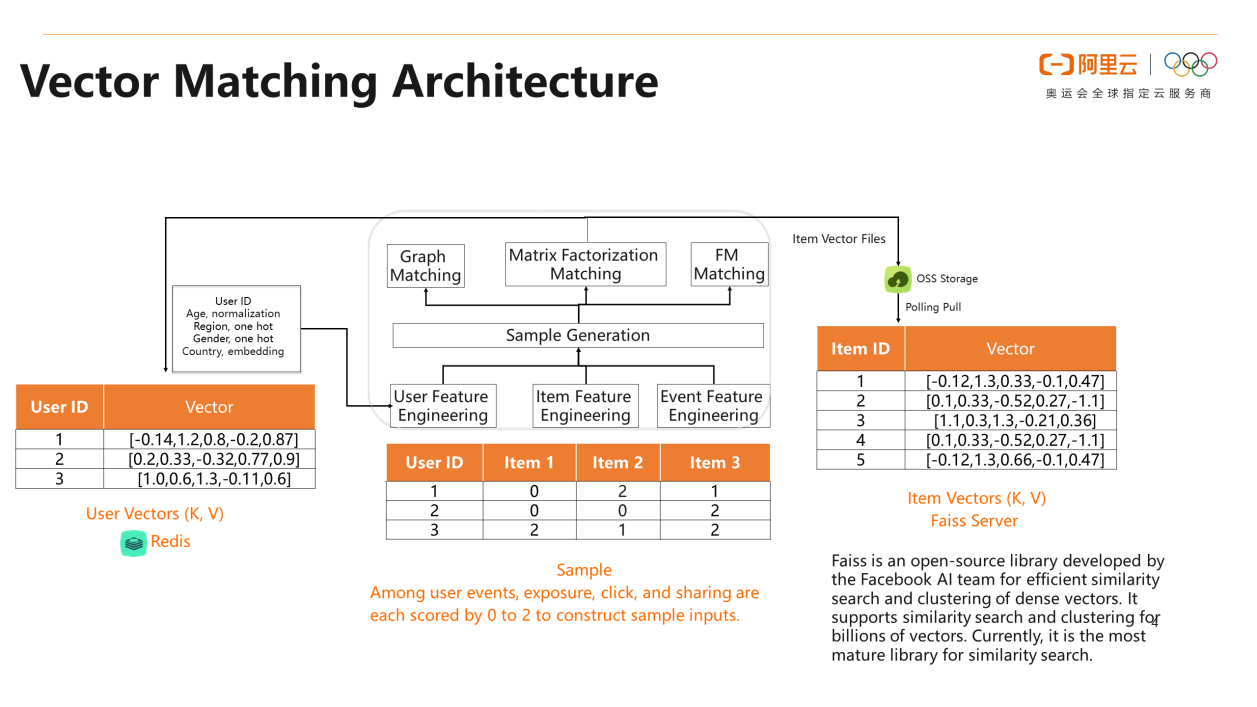Are you an AI enthusiast with a keen eye on innovation? Sign up for the Alibaba Cloud Global AI Innovation Challenge and win big! Sign Up Here >>
By GarvinLi
In this article, Alibaba technical expert Aohai introduces the matching algorithms and architecture, specifically, the introduction of matching module in a recommender system, matching algorithms, collaborative filtering, and vector matching architecture.
In the first article of the series for building an enterprise-level recommender system, we have introduced the recommender system architecture, its modules, and the application of cloud services in each module. In this article, we will focus on the matching algorithms in a recommender system and how you can build a matching architecture. First, let's review the matching module in a recommender system. The matching module is used for preliminary filtering. When user A visits a platform, the matching module filters out items that user A may like from a huge number of items. For example, the platform has 100,000 items, and the matching module filters out 500 items that user A may like. Then, the ranking module ranks these items based on user A's preferences.

This section describes the algorithms that the matching module may use. The following figure shows four popular algorithms. The rightmost is the collaborative filtering algorithm, and the left three algorithms are related to vector matching. Collaborative filtering is similar to statistics-based algorithms. It finds out users with the same interests or items that are purchased at the same time. For example, we find out that beers and diapers in supermarkets are always purchased together based on a large amount of data statistics. Vector matching algorithms are deep-level models based on machine learning. For example, Alternating Least Squares (ALS) is a typical matrix factorization method. It can generate a user embedding table and item embedding table based on behavior data tables. This is a basic method for vector matching. Factorization Machine (FM) has the similar logic and uses the inner product method to enhance feature representation. I would like to introduce the GraphSage algorithm. It is actually a matching algorithm for graph neural networks (GNNs). Currently, the algorithm is not widely used in the Internet field. However, some large Internet companies, such as Taobao, use it frequently in recommendation scenarios. GraphSage is a graph algorithm built based on a deep learning framework. It can generate the user embeddings and item embeddings based on features and behavior of users and items. The GraphSage algorithm is often used in e-commerce matching scenarios.

This section describes the collaborative filtering algorithm, which is easy to understand. For example, the following figure shows the preferences of users A, B, and C. Users A and C have similar tastes. Specifically, both users A and C like rice and milk. In addition, user A likes lamb but user C does not like it. We assume that user C also likes lamb and regard lamb as a matching result of user C. This is standard collaborative filtering based on data statistics. This figure can help you understand how collaborative filtering works.

This section describes how you can use the preceding three vector matching algorithms. The input data of these algorithms are user IDs, item IDs, and behavior data. The following figure shows a user behavior data table. After you access the table, you can use a vector matching algorithm to obtain two vector tables. These vector tables contain key-value pairs. Each user ID corresponds to a vector, and the key-value pairs can be cached in Redis. In actual use, you need to store the data to the Faiss server. Faiss is an open-source engine developed by the Facebook AI team for vector retrieval. It provides multiple vector retrieval modes and can return the result for retrieving millions of vectors in one millisecond. It has an excellent performance and is usually used in the recommendation matching field. For example, when we want to recommend an item to a user, we use the user ID and its vector to check which item vectors in the Faiss engine have the closest Euclidean distance to the user's vector. For example, we use the top 10 item vectors as the matching result of the user. That is the overall vector matching architecture, in which both Redis and Faiss are used.

Learn more about Alibaba Cloud Machine Learning Platform for AI (PAI) at https://www.alibabacloud.com/product/machine-learning
The views expressed herein are for reference only and don't necessarily represent the official views of Alibaba Cloud.
Recommender System: Online Service Orchestration and Architecture
Alibaba Cloud Digitalizes Sports Events with More AI Solutions

2,597 posts | 774 followers
FollowAlibaba Clouder - May 11, 2021
Alibaba Clouder - September 25, 2020
Alibaba Clouder - September 17, 2020
Alibaba Clouder - September 17, 2020
Alibaba Clouder - September 6, 2018
Alibaba Clouder - September 17, 2020

2,597 posts | 774 followers
Follow Tair (Redis® OSS-Compatible)
Tair (Redis® OSS-Compatible)
A key value database service that offers in-memory caching and high-speed access to applications hosted on the cloud
Learn More ApsaraDB for HBase
ApsaraDB for HBase
ApsaraDB for HBase is a NoSQL database engine that is highly optimized and 100% compatible with the community edition of HBase.
Learn More Quick BI
Quick BI
A new generation of business Intelligence services on the cloud
Learn More Offline Visual Intelligence Software Packages
Offline Visual Intelligence Software Packages
Offline SDKs for visual production, such as image segmentation, video segmentation, and character recognition, based on deep learning technologies developed by Alibaba Cloud.
Learn MoreMore Posts by Alibaba Clouder
Start building with 50+ products and up to 12 months usage for Elastic Compute Service
Get Started for Free Get Started for Free